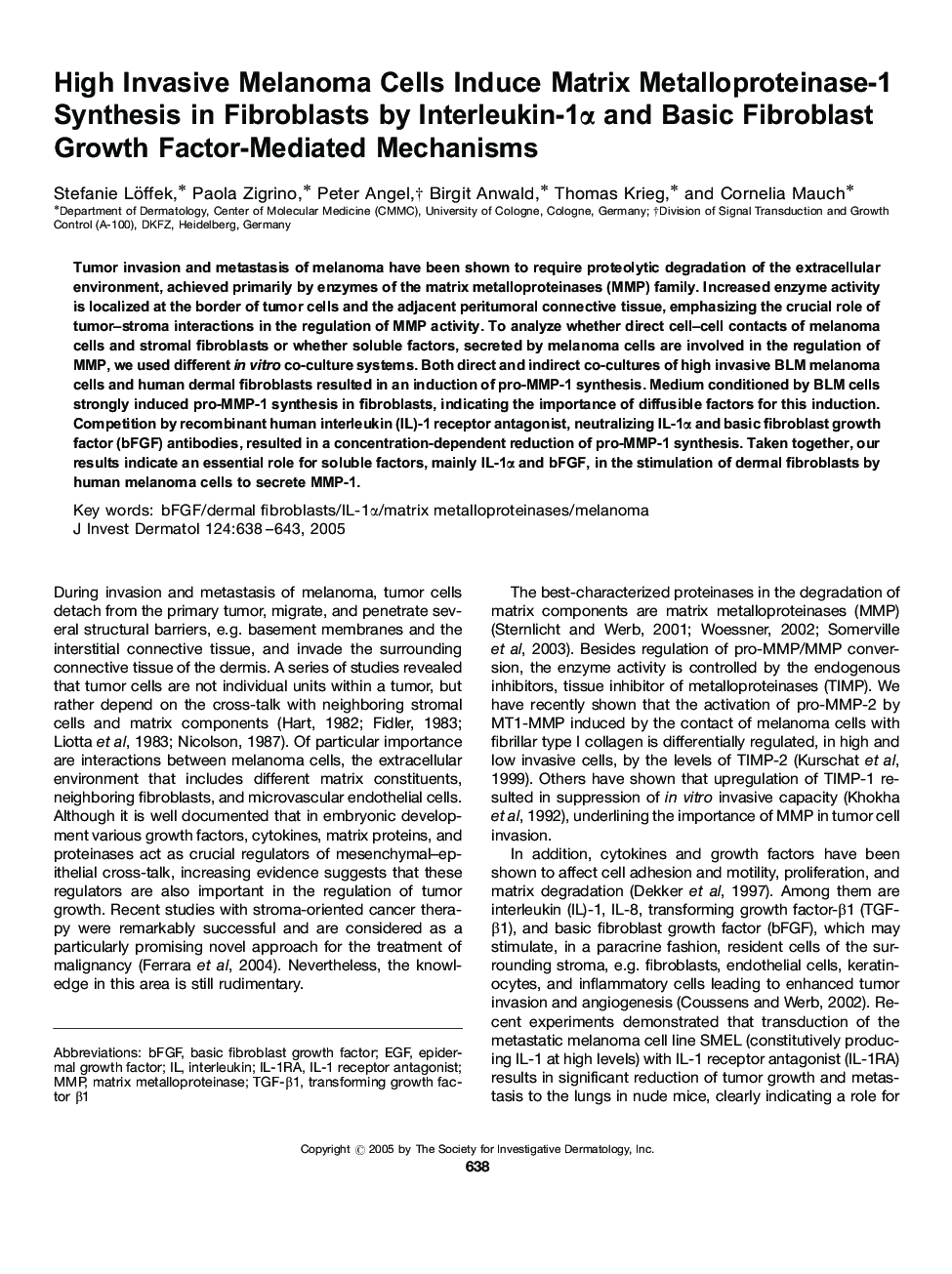| Article ID | Journal | Published Year | Pages | File Type |
|---|---|---|---|---|
| 9230321 | Journal of Investigative Dermatology | 2005 | 6 Pages |
Abstract
Tumor invasion and metastasis of melanoma have been shown to require proteolytic degradation of the extracellular environment, achieved primarily by enzymes of the matrix metalloproteinases (MMP) family. Increased enzyme activity is localized at the border of tumor cells and the adjacent peritumoral connective tissue, emphasizing the crucial role of tumor-stroma interactions in the regulation of MMP activity. To analyze whether direct cell-cell contacts of melanoma cells and stromal fibroblasts or whether soluble factors, secreted by melanoma cells are involved in the regulation of MMP, we used different in vitro co-culture systems. Both direct and indirect co-cultures of high invasive BLM melanoma cells and human dermal fibroblasts resulted in an induction of pro-MMP-1 synthesis. Medium conditioned by BLM cells strongly induced pro-MMP-1 synthesis in fibroblasts, indicating the importance of diffusible factors for this induction. Competition by recombinant human interleukin (IL)-1 receptor antagonist, neutralizing IL-1α and basic fibroblast growth factor (bFGF) antibodies, resulted in a concentration-dependent reduction of pro-MMP-1 synthesis. Taken together, our results indicate an essential role for soluble factors, mainly IL-1α and bFGF, in the stimulation of dermal fibroblasts by human melanoma cells to secrete MMP-1.
Related Topics
Health Sciences
Medicine and Dentistry
Dermatology
Authors
Stefanie Löffek, Paola Zigrino, Peter Angel, Birgit Anwald, Thomas Krieg, Cornelia Mauch,
